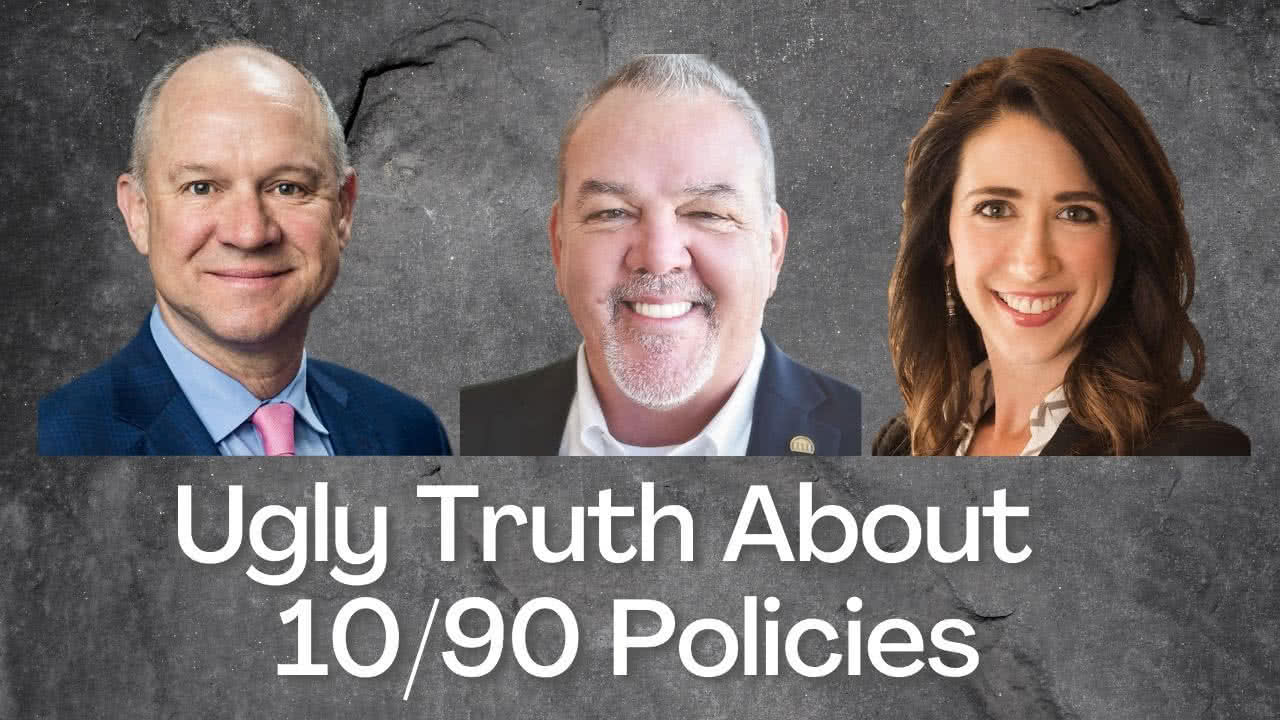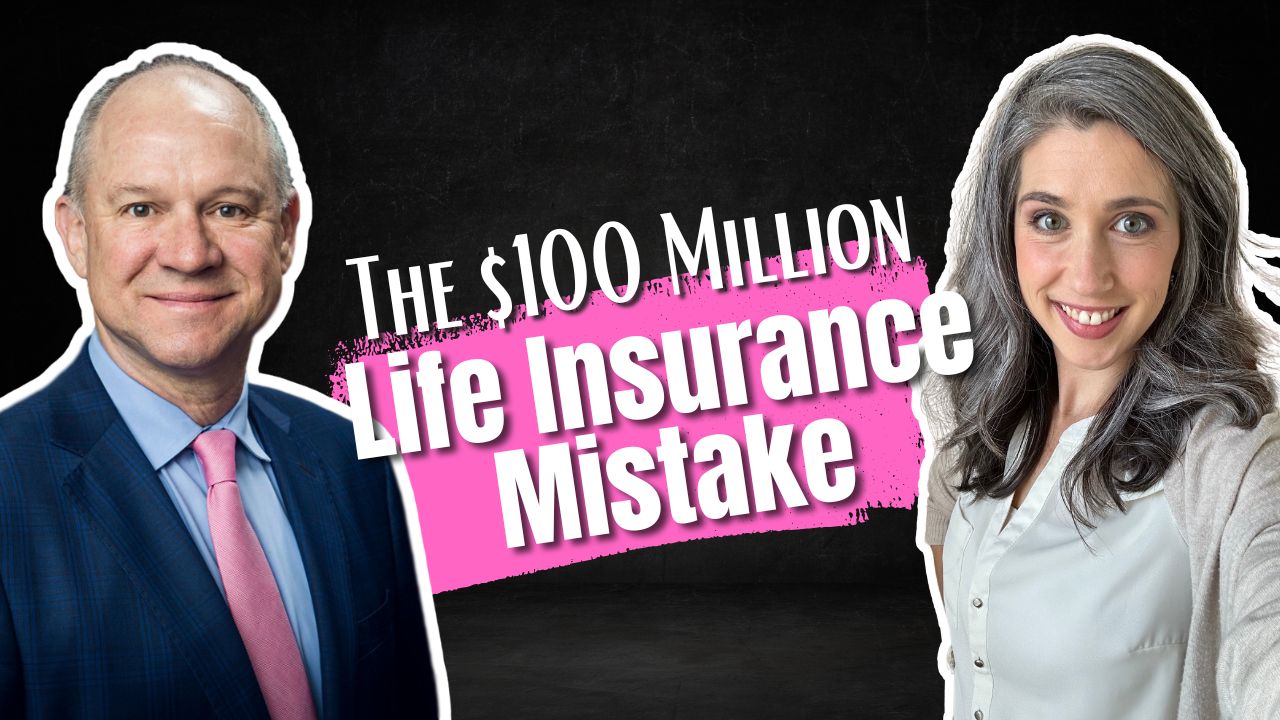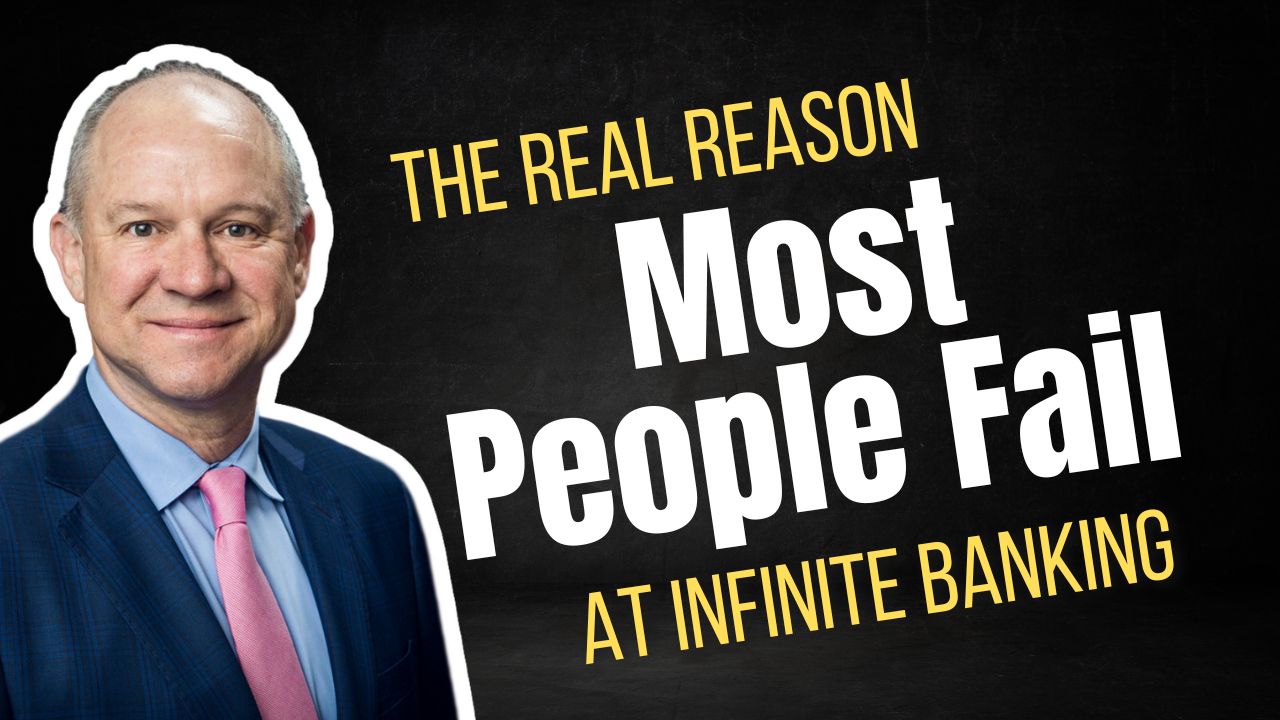
The Ugly Truth About 10/90 Infinite Banking Policies – James Neathery
Want maximum immediate liquidity with an IBC policy? Planning to fund a 10/90 infinite banking policy and then take max loans to fund real estate? Are these double-dipping returns too good to be true?
STOP. Listen to this first.
The allure of making an IBC policy better than even the creator of the term IBC has many people shopping for “Skinny Base” whole life policies with maximum early cash value.
But there are problems on the horizon. And we’re scared of what 10/90 infinite banking policies mean for many who want guarantees.
Today, we’re talking with James Neathery, fellow IBC thought leader, Nelson Nash Institute certified IBC practitioner, and executive producer of the best-selling documentary on the Infinite Banking Concept, Banking with Life. In this rare panel discussion, we’re collaborating to give you the truth about policy design and what you need to understand that most financial advisors will never tell you.
So, if you want to ensure you build your IBC policy on solid rock and not shifting sand, tune in now!
Podcast: Play in new window | Download (Duration: 1:09:19 — 79.3MB)
Subscribe: Apple Podcasts | Spotify | Android | Pandora | Youtube Music | RSS | More
Table of contents
Illustrations Aren’t Always Helpful
[5:45] “Specifically speaking about equipment financing in his first book, Becoming Your Own Banker... [Nelson Nash] said… if he were to rewrite the book, he would not put illustrations in the book. Because they serve, really, as a point of confusion. You know, you cannot look at a life insurance illustration—the tabular detail where all the numbers are—and make a coherent decision.”
We believe this is a significant point because examining the numbers seems like a logical step. Yet, the illustration is a projection of what we expect to happen, not a guarantee of the policy’s outcome. Examining all the numbers can be overwhelming and muddy the concept as a whole. Not to mention, if you’re looking for early cash value and comparing illustrations, you may even overlook the big picture.
Illustrations often reflect best-case scenarios based on assumptions that may never come true. The reality of how your policy performs depends on factors such as dividend rates, costs, and how you utilize the policy. As James Neathery says, an illustration is a snapshot, not a strategy.
[8:15] “In the agent’s heart of hearts, they think that this is right, squeezing the base down…so you can have a high PUA or high cash value, or a high immediate loan value. But then they don’t realize what they’re sacrificing in the future with those policies. And there is absolutely a trade-off.”
Thinking Big-Picture
While the goal of infinite banking is to create a system of wealth for yourself that is liquid, reliable, and certain, it’s often mistaken for a magic pill, especially when people hear about strategies like the 10 90 split.
People want a quick solution, with a quick cash value build-up. They want a magical pool of money to dip into. Unfortunately, this short-term thinking can prevent you from seeing and fully appreciating the long-term benefits of whole life insurance.
Early cash value build-up isn’t inherently good or bad—it depends on the purpose of your money. However, it isn’t magic. It still takes time and diligence to maintain a policy. Life insurance is meant to be a generational tool—well beyond even your own life.
[11:05] “You are afraid to capitalize, you are afraid to pay a premium if you have to have access to 100% of it.”
James Neathery isn’t disparaging access to capital; however, he is pointing out a system of flawed thinking here. While a 10/90 whole life insurance policy may give you access to more of your premium immediately, it also tends to be a slippery slope. In James’ experience, he has seen people take out an early policy loan and feel overconfident in the early cash value, and repay the loan irresponsibly. This, and other factors, can actually limit the long-term benefits.
This is why 10/90 whole life insurance should be approached with caution. Policy design must strike a balance, not maximize one metric at the expense of future flexibility or growth. Infinite Banking isn’t about fast cash value; it’s about building long-term control over your capital. The best decisions are made by thinking in decades, not months.
Don’t Steal the Peas
In Nelson Nash’s book, Becoming Your Own Banker, he equates owning a life insurance policy to being a grocery store owner. And as the owner, you’ve got canned goods like peas out on the shelf. As the store owner, you could argue that it’s cheaper for you to take the peas from the back room instead of paying for them upfront.
However, in doing so, you must sell your product at a higher price in order to retain the same profits. So you kill your profitability by stealing from the back end. Furthermore, stealing the peas sets the example for your workers.
When you are creating your infinite banking system, it may also be tempting to take the easy way out. You may not want to pay the loans back or pay them on any kind of schedule. But in the long run, this only hurts your policy. You have the right to do this, but you must also think about how you want your policy to function long term. Not to mention, consider potential emergencies. And the fact of the matter is that defaulting on your policy loans can create a taxable event, in addition to permanently reducing your cash value.
10/90 Infinite Banking Policies and the Long-Term
[21:20] “Every year that we are alive, every year we get closer and closer to mortality. So [cost of] the death benefit goes up, right?”

For example, you can purchase a term insurance policy at 30, and the same amount again at 40, but the policy you buy at 40 will cost more. And it costs more because you’re closer to mortality, so it’s funded over a shorter time frame. James then argues that the more you front-load a policy, the harder it becomes to maintain that premium.
While 10/90 infinite banking policies may offer more liquidity in the early stages, they can actually prevent long-term dividend growth.
[23:55] “You want as much liquidity—and I agree with that, you want liquidity in the early years, no question—but you don’t want to distort the policy to get artificial liquidity… Why would you not pay, or stop yourself from the ability to pay a premium, when it’s just become extremely efficient in year five, six, seven, or eight?”
[32:00] “You go look at the 10/90 construct, or the 5/95, the 15/85 and just compare out at age 120… So when you’re looking at all those numbers and being mesmerized by the first-year or second-year cash value, go ahead and go to the 120th year. Look at the guaranteed cash values compared to the non-guaranteed cash values… And when you see a five and seven, and ten times difference—you tell me if that life insurance company is going to pay that dividend.”
Giving Up Guarantees with 10/90 Infinite Banking Policies
Contractually, your policy’s cash value must grow each year. It must grow so that it equals the face amount of the policy in year 120. The face amount is also growing from the day you put the policy in place. James then asks, do you want a small death benefit at age 120, or a large death benefit? In all likelihood, you probably want as much death benefit as possible to pass on to your heirs.
The best way to have this death benefit guaranteed for life is to have as much base as possible. However, 10/90 infinite banking policies are something to be cautious of if what you’re seeking is growth and guarantees. You must ask yourself what you want from your life insurance to determine what will work for you.
[47:15] “If we’re talking about the infinite banking concept, I think the source—the original source—is the correct place to start. Nelson’s Becoming Your Own Banker book, the second book Building Your Warehouse of Wealth, and some of the other books that are available at the Nelson Nash Institute.”
About James Neathery
James Neathery specializes in providing strategic financial advice, drawing on decades of research and experience in finance and economics. James is a disciple and student of R. Nelson Nash, the creator of the Infinite Banking Concept®. He is also a student of the Austrian school of economics.
James holds several designations, maintains multiple affiliations, and is active in the financial services industry. He has been in the life insurance industry for over 30 years, educating clients and personally practicing the Infinite Banking Concept™ for over 17 years.
James C. Neathery & Associates, Inc. has provided sound, successful advice to thousands of clients. Over the years, he has helped them protect millions of dollars in wealth and assets through several boom-and-bust cycles in the U.S. economy.
James is the Executive Producer of the best-selling documentary on the Infinite Banking Concept, Banking With Life. The powerful information in this film is being used by financial professionals across the country to educate their clients on how to take control of their money by solving the banking equation in their lives.
Book A Strategy Call
Do you want to coordinate your finances so that everything works together to improve your life today, accelerate time and money freedom, and leave the greatest legacy? We can help!
Book an Introductory call with our team today to learn how Infinite Banking, alternative investments, or cash flow strategies can help you accomplish your goals better and faster.
That being said, if you want to find out how our privatized banking strategy gives you the most safety, liquidity, and growth and boosts your investment returns, read our free privatized banking guide to learn more and guarantee a legacy.
FAQs
What is a 10 90 insurance policy?
A 10 90 insurance policy refers to a whole life insurance structure where 90% of the premium goes toward paid-up additions (PUAs) and only 10% funds the base premium.
Is 10/90 whole life insurance the best option for Infinite Banking?
Not always. While a 10/90 whole life insurance setup may look appealing for fast liquidity, it often prioritizes early access over long-term efficiency.
What are the risks of a 10 90 split in life insurance design?
The main concern is sustainability. A 10 90 split can limit long-term growth, reduce death benefit potential, higher risk of becoming a MEC,and create overreliance on policy loans early on. Without a solid repayment strategy, the benefits of Infinite Banking can be diminished.
Can you fix a poorly structured IBC policy later?
No, but you can often manage it to reduce or mitigate the risks. You can adjust your contributionsby reducing PUAs, or even exchange policies. But it’s much easier—and more cost-effective—to start with a properly designed structure than to reverse-engineer a policy that leaned too heavily into early liquidity.
Indexed Universal Life Lawsuit: Kyle Busch vs Pacific Life—and the Lessons Every Family Needs
Why the Indexed Universal Life lawsuit is a wake-up call The headlines about the Kyle Busch vs Pacific Life indexed universal life lawsuit sparked the same question I hear from thoughtful families: is my policy designed to serve me, or to serve a sales incentive? This isn’t tabloid noise. It’s a real-world reminder that choices…
Read MoreInfinite Banking Mistakes: The Human Problems That Derail IBC
“It’s not the math. It’s the mindset.” When Bruce recorded this episode solo, he opened with something we’ve learned after thousands of client conversations: the biggest Infinite Banking mistakes aren’t about policy illustrations or carrier choice. They’re about us—our habits, our thinking, and the quiet patterns we bring to money. I remember Nelson Nash repeating,…
Read More



